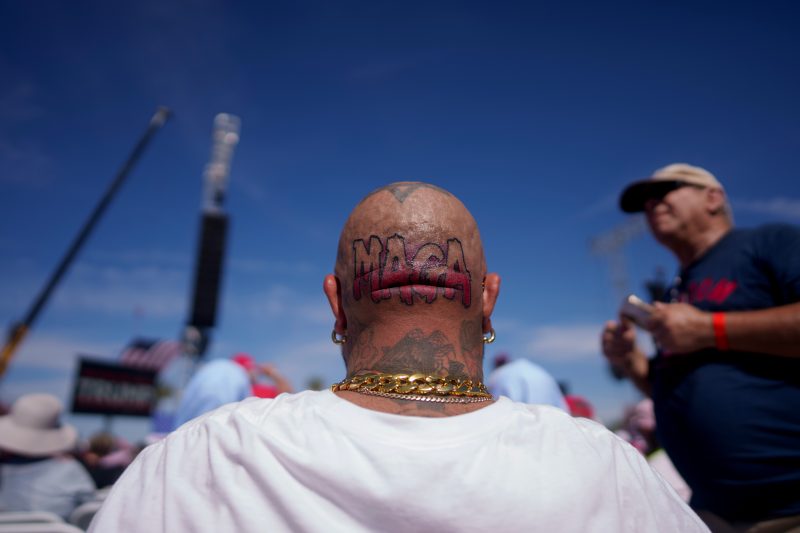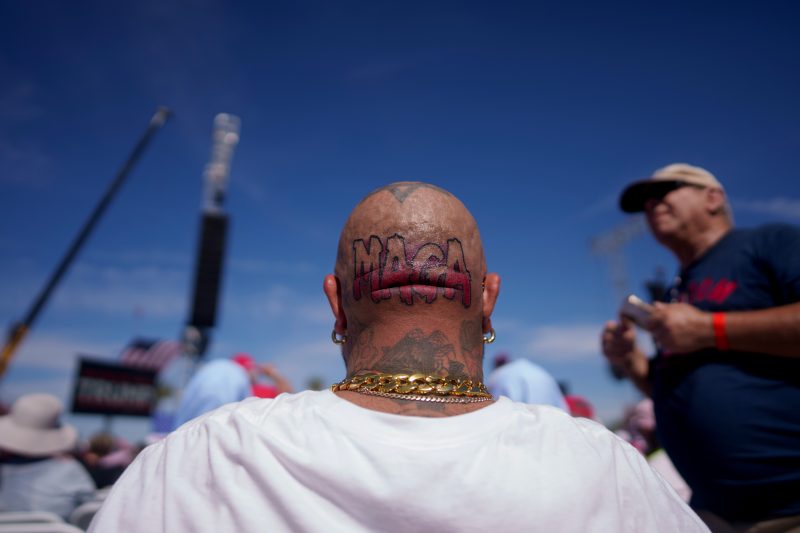
Minnesota Gov. Tim Walz (D) made headlines last week by echoing a common refrain from members of his party, particularly over the past decade.
“I think all of us know the electoral college needs to go,” Vice President Kamala Harris’s running mate said at an event in California. Instead, he added, “we need a national popular vote.”
In short order, Walz moderated his position back in line with the campaign. Saying that the electoral college is archaic and harmful is a tacit rejection of the importance presidential candidates slather on states like Pennsylvania and Arizona. Probably more importantly, it’s also a line that (as Walz acknowledged) is common among hard Democratic partisans, a group that Harris isn’t eager to suggest is at the center of her candidacy.
Supporters of Donald Trump didn’t let him off the hook that easily. One pro-Trump social media account, for example, shared a political cartoon suggesting that Walz’s disparagement of the electoral college was a function of Trump seizing a lead in swing states.
pic.twitter.com/NyrYrCYiIu
— MAGA Resource (@MAGAResource) October 14, 2024
“Abolish the electoral college,” Walz is pictured saying, “so New York and California can decide our elections!”
This is a common line of argument. Get rid of the electoral college and presidential campaigns will have no incentive but to appeal to voters in more populous states — more populous states that, you will notice, vote heavily Democratic.
There are lots of decent arguments for retaining the electoral college. This is not one of them.
The United States is home to 337 million people. More than 80 percent of them live somewhere other than California or New York. If we picked an American at random, we’d have good odds of picking a Californian or a New Yorker — and much better odds of picking someone from somewhere else.
See for yourself. Click the button below to pick a random American. How often do you get someone from one of those states?
In part, this argument is a proxy for “voters in Los Angeles and New York” since running one television ad in those cities hits a lot of potential voters. (Of course, thanks to their proximity to current swing states, those cities get a lot of presidential ads already.) But it ignores that there are a lot of people in populous red states, too, including people who live in large cities in those states.
Two of the states where the most votes were cast in 2020 were states that backed Trump by at least 3 percentage points. Four of the top 10 states voted for Trump. Three of the ones Biden won, he won by 3 percentage points or less.
In other words, the idea that switching to a national popular vote would necessarily mean a focus on populous blue states ignores that there are a lot of populous red states, too.
More importantly, though, there are a lot of Republican voters in those blue states! (And vice versa, of course.) Yes, California backed Joe Biden by a wide margin in 2020, but there were more than 6 million people in the state who voted for Trump. That’s more votes than he got in any other state. It’s more votes than he got in the 17 states where he received the least total votes.
Add in the more than 3 million votes he got in New York, and you have 9.3 million Trump voters who were never targeted by presidential campaigns because their states’ electoral votes were predetermined.
Trump actually received more votes in states he lost in 2020 than in states he won. There were 36 million voters whose ballots went to electors who cast ballots for Trump. Another 38 million, including those 9-million-plus in New York and California, cast ballots that were essentially uncounted as their states’ electors went to Joe Biden.
A lot of those votes did come in swing states, mind you. About a fifth of both candidates’ votes came in states that were decided by less than 3 percentage points.
This doesn’t necessarily suggest that those states would see the same level of politicking should the electoral college suddenly vanish, certainly. One response to such a change would likely be that turnout increased in states where votes suddenly mattered. In the 10 states with the narrowest margins in 2020 — mostly swing states — turnout was about 5 percentage points higher than in the 10 states with the widest margins.
Again, there are other arguments for the existence of the electoral college. Some are straightforwardly partisan, recognitions that its existence has given Republicans two presidents in the past 30 years who lost the popular vote (including Trump). Others appeal to the wisdom of the Founding Fathers in establishing the system as it exists. Yet others argue that it imposes a sort of moderation on candidates who would otherwise simply appeal to tightly packed urban voters.
In practice, though, that last point has in recent years also been a partisan argument. It is safe to say that Trump has not significantly moderated his positions to appeal to swing-state voters. Thanks in part to the electoral college, he is running a national campaign appealing to the homogenous interests of his heavily rural party.
It’s an approach that allowed him to take the unusual step of holding a campaign rally in California earlier this month. For those few hours, Republicans in that state got to feel something otherwise unfamiliar: that a Republican presidential candidate cared about their votes.

